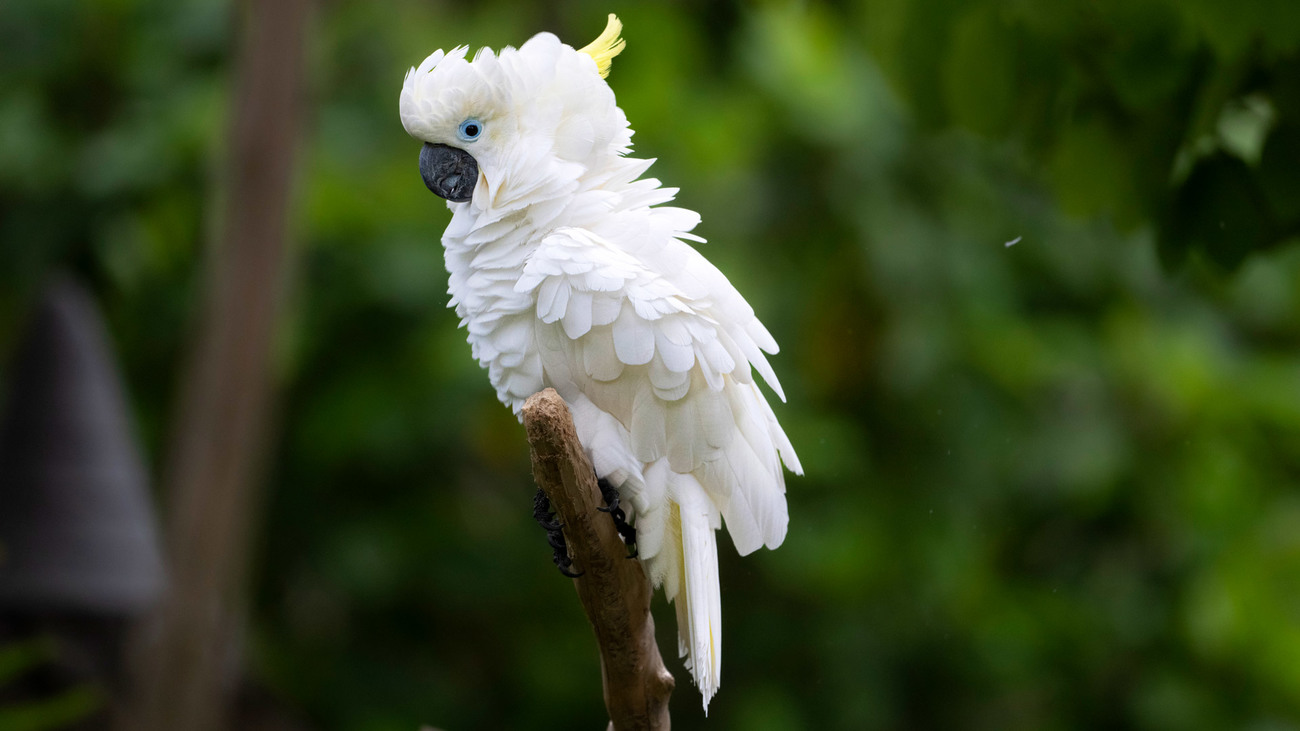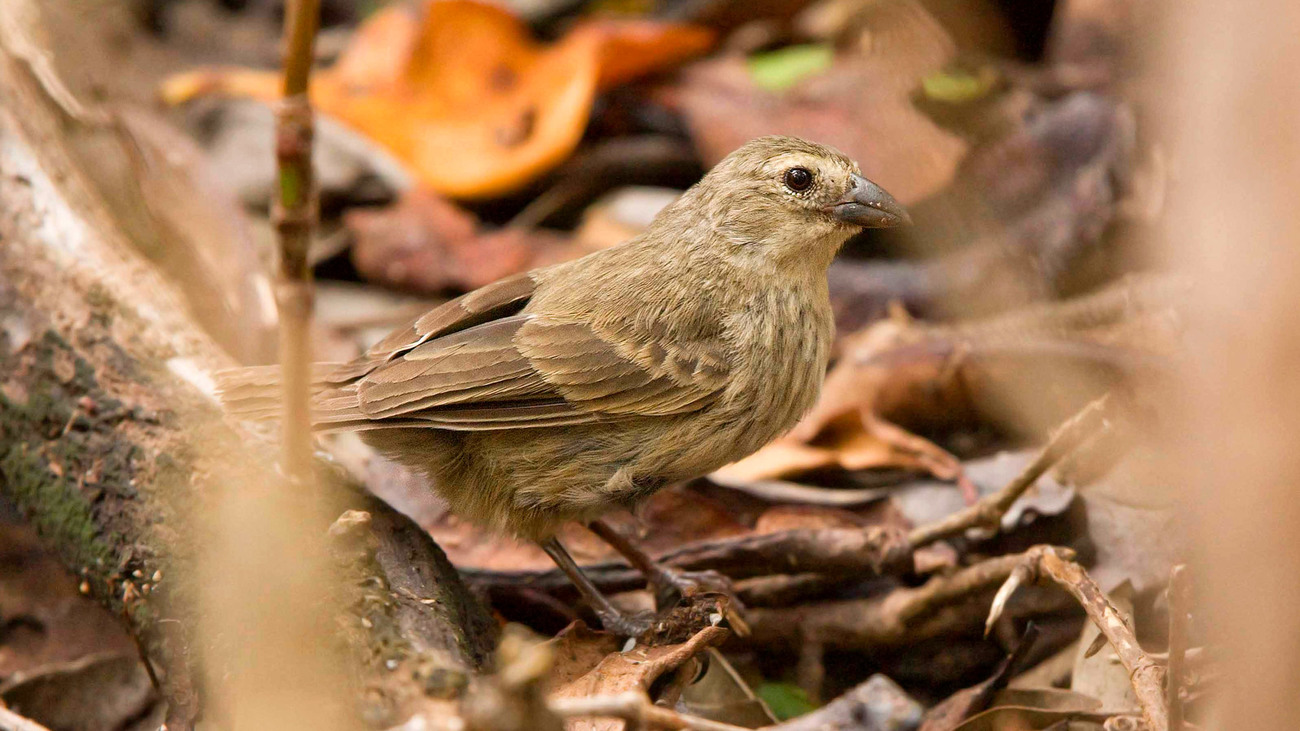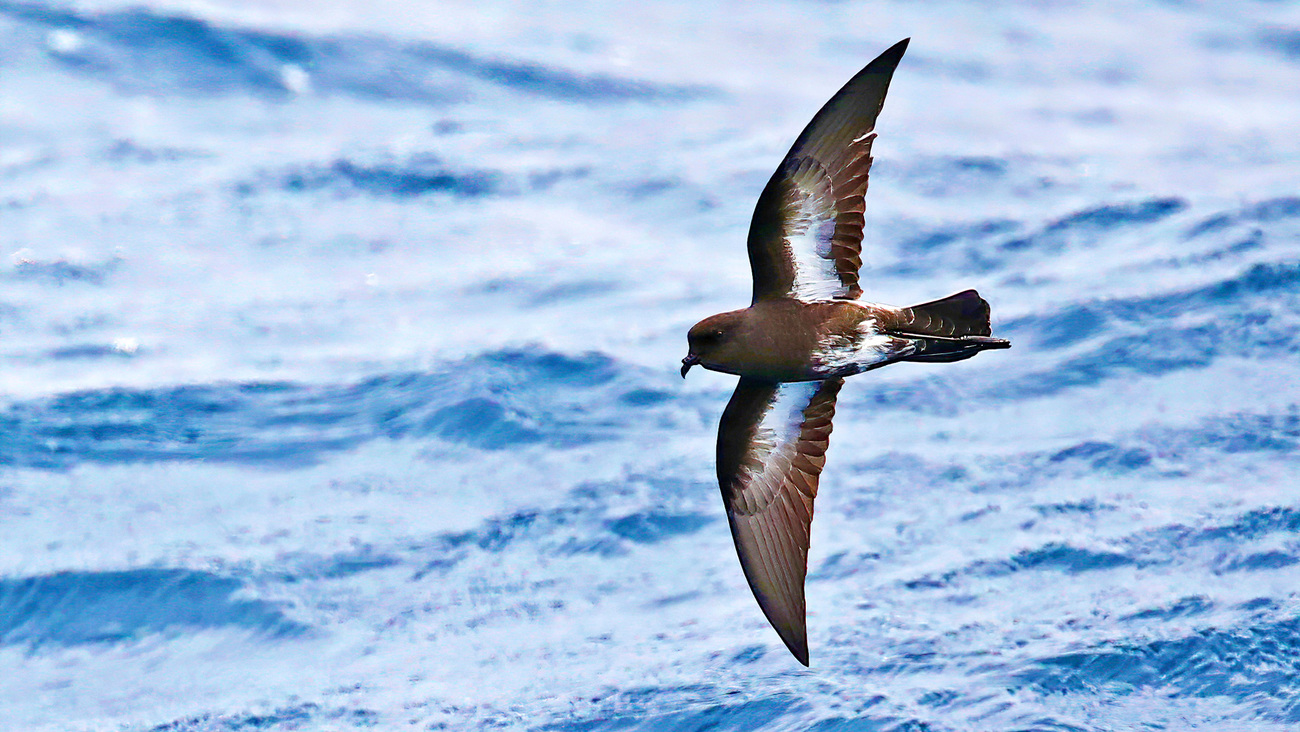Live Animals Seized in Trade - Global
Stopping smugglers is the first step, rescuing animals is the next19 of the world’s most endangered birds in 2025
19 of the world’s most endangered birds in 2025
There are over 10,000 species of birds on the planet, from the largest hawks and vultures to the smallest finches and hummingbirds. Unfortunately, many of them are on the brink of extinction. As human activity impacts wildlife around the world, it is important that we work to mitigate threats like deforestation and climate change and protect these endangered birds.
As a conservation and rescue organisation, protecting animals from these threats and others is among IFAW's top priorities. Learn more about our work, including our Beijing Raptor Rescue Center for birds of prey and our songbird protection project, and how you can get involved.
This is a list of 19 of the most endangered birds in the world in 2025, all classed as endangered or critically endangered on the IUCN Red List.
Yellow-crested cockatoos

The yellow-crested cockatoo, a medium sized white parrot native to Indonesia and Timor-Leste, is critically endangered. In 2025, there are an estimated 1,200-2,000 individuals remaining in the wild, and their population is sadly still decreasing. The yellow-crested cockatoo’s decline is primarily due to wildlife trade and trafficking, which effectively became illegal in 1994 after these cockatoos were included in Appendix I of CITES; however, illegal trapping of these birds continues in many areas. Because they breed in large tree hollows, logging and agriculture also indirectly threaten their survival.
You might be wondering if yellow-crested cockatoos make good pets. These birds are frequent victims of the exotic pet trade. Owning an exotic pet like a cockatoo requires a substantial amount of work and time commitment. They are wild animals that can live for up to 60 years. They are not suitable family or household pets, as they often use their strong beaks to break and destroy wooden objects and furniture and need a large space to fly.
California condors
The California condor is critically endangered, and their primary threat has historically been lead poisoning. This occurs due to the bullets used in hunting, which has also contributed to the California condor’s decline. One study found that one-third of California condors had toxic levels of lead in their blood. Other threats to this species include the use of the pesticide DDT, ingestion of trash, and West Nile virus.
When the species was last assessed in 2020, researchers found that there were only 93 California condors left in the wild.
These huge birds with wingspans of about 3 metres (9 feet) are native to the US West Coast. Their former range spanned from Vancouver all the way to Mexico, but now they are only found in two small populations—one in California and one in northern Arizona. Fortunately, the IUCN reports that their numbers are increasing.
Northern bald ibises
Ibises are long-legged wading birds in the family Threskiornithidae. Large, black birds with red faces, they have long, downcurved bills, which they use to poke around in the mud for crustaceans.
The northern bald ibis is endangered due to a combination of factors—different threats are affecting different populations. Hunting was the main threat to the northern bald ibis population in Syria, and it was last seen in the wild through a single female that migrated south, destined for wintering in Ethiopia in 2015. In Turkey, poisoning and reduced breeding success due to pesticides has posed a major threat. The Morocco population has faced illegal building and changes in farming that have disturbed their habitats. Illegal hunting was the cause of this bird’s disappearance from Italy in the 19th century. These are just a few of the reasons why the Northern bald ibis is endangered.
Only about 200-250 northern bald ibises are left in the wild in Morocco. Populations in northern Algeria and Syria, Turkey, and Iraq have gone extinct. In some parts of the Middle East and North Africa, their presence is uncertain, while they have been recently observed on their migration route in the Arabian Peninsula, Ethiopia, and Eritrea.
São Tomé ibises
The São Tomé ibis, also known as the dwarf olive ibis (thanks to its dark green color), is a critically endangered species of ibis native to the island of São Tomé, off the coast of West Africa.
There are six species of ibises that are classified as endangered or critically endangered, and the São Tomé ibis is one critically endangered species. About 130-1,700 São Tomé ibises are left in the wild, and their population is sadly in decline. Their biggest threat is currently hunting.
Amazon parrots

Are Amazon parrots endangered? Out of 36 species of Amazon parrots assessed by the IUCN, five are endangered and four are critically endangered, namely the imperial Amazon, lilacine Amazon, Puerto Rican Amazon, and yellow-naped Amazon. Two species have gone extinct—the Guadeloupe Amazon and the Martinique Amazon.
Native to the island of Dominica, there are only 40-60 remaining imperial Amazon parrots. The primary threat they face is habitat degradation and loss due to hurricane damage. In 2017, Hurricane Maria destroyed 30% of Dominica’s forest cover, forcing imperial Amazons to forage outside of their usual habitat. Climate change is only worsening the severity of hurricanes.
Puerto Rican Amazons have an even lower population—fewer than 50 individuals. Hurricanes Maria and Irma have also had severe impacts on these parrots.
Depending on the species, Amazon parrots can live for around 30-50 years. Though they are commonly sought as pets, they are wild animals and do not make suitable household pets due to their long lifespans, destructive tendencies, and demanding needs.
Imperial woodpeckers
Out of the over 200 species of woodpeckers, six total species are endangered or critically endangered. One of the most endangered is the imperial woodpecker, which has fewer than 50 individuals remaining in the wild—in fact, the species is possibly extinct. Formerly found in forests across Mexico, the imperial woodpecker has faced hunting and deforestation to such a level that they have not been spotted since 1956.
You might have wondered if woodpeckers are bad for trees, but woodpeckers aren’t generally bad for trees. They peck through wood so they can access sap and insects, important parts of their diet. Rather than harming them, woodpeckers’ eating of insects can benefit trees. Woodpeckers play a key role in their ecosystems as insectivores, controlling populations and preventing insect infestation.
African grey parrots
African grey parrots are endangered. Native to Central and West Africa, these birds are highly in demand for the exotic pet trade around the world. Illegal trapping and trafficking of African greys has largely led to their decline, in addition to habitat loss.
African grey parrots have a lifespan similar to that of humans—60 to 80 years. This makes them unsuitable as pets, because they will most likely have to be rehomed several times throughout their lives, which is a traumatic experience. Though they are known for their unparalleled intelligence and mimicking ability, which makes them highly sought after, African grey parrots should not be kept as pets, as they are wild birds that require a large amount of space and have demanding needs.
Bahama nuthatches

Nuthatches are a genus of birds with large heads, short tails, and strong, pointed beaks. Most species are blue-grey with black eyebrows. Bahama nuthatches have brown heads and white underbellies.
Native to the Grand Bahama Island of the Bahamas, the Bahama nuthatch is one of the most critically endangered nuthatch species, with an estimated fewer than 50 individuals remaining. The main threat Bahama nuthatches face is hurricanes. Since Hurricane Dorian, a Category 5 storm, hit the island in 2019, the species has not been sighted, meaning it has possibly gone extinct.
Indian vultures
While not all vultures are endangered, there are many species of vultures that are vulnerable, endangered, or critically endangered. One such species is the Indian vulture. Because vultures are scavengers, meaning they feed on carcasses and the remains of dead animals, they frequently ate dead livestock, including cattle and buffalo. If these livestock animals had been treated with diclofenac, a non-steroidal, anti-inflammatory drug, the vultures ingested this drug and were killed as a result. This has caused significant mortalities among the Indian vulture population. Other drugs used to treat livestock have also been found to be toxic to vultures. Despite regulations, these drugs still threaten the survival of the species.
A survey published in 2019 suggests that a rough estimate of 8,000 mature Indian vultures are left in the wild. Their population continues to decrease. While once found throughout the entire country of India and in southeast Pakistan, these vultures are now extinct in many areas.
Maui parrotbills
The Maui parrotbill is a species of Hawaiian honeycreeper, which is part of the finch family. It’s a small, yellow-green bird with a peculiar, hooked beak resembling that of a parrot—but the parrotbill is unrelated to the parrot family. Despite its small size, this beak is powerful—the Maui parrotbill uses it to remove bark and wood from trees to eat the insects that live underneath.
Found only in a small area on the Hawaiian island of Maui, there are an estimated 105 parrotbills left. Unfortunately, they are critically endangered and have a decreasing population. Maui parrotbills previously experienced decline due to an invasion of feral pigs into their habitat. Now, their remaining habitat is fenced—this may be able to help the species recover. However, avian malaria and climate change both threaten their survival. Climate change is causing avian malaria to thrive in higher elevations.
Mangrove finches

The mangrove finch is a species in Darwin’s finch group, part of the tanager family, with dull brown, olive-toned, and white plumage. It’s native to the Galápagos Islands.
As Darwin famously observed in this group of finches, the Mangrove finch has a beak specially adapted for its diet. Its long, pointed beak is used for lifting the scales of tree bark to grab insects underneath them.
The mangrove finch is one of the most critically endangered finches. It has a decreasing population of only 20-40 remaining individuals. The mangrove finch is declining due to threats of predation and parasites from invasive species.
Seychelles scops owls
Residing only in Morne Seychellois National Park on the island of Mahé, the Seychelles scops owl, also known as the bare-legged scops owl, is an owl with un-feathered legs, brown plumage, and large, golden-yellow eyes.
An estimated 200-280 individual Seychelles scops owls are left, and they are critically endangered due to deforestation—though much of this has been limited; introduced species including rats, cats, and barn owls; as well as disease and climate change.
Fruit doves
Four species of fruit doves are endangered or critically endangered. The Rapa fruit dove and the Negros fruit dove are critically endangered species with very limited remaining populations.
The Rapa fruit dove, a colorful bird with an orange-yellow belly, green wings, gray chest, and bright pink crown, lives only on the small island of Tubuai, located in the remote South Pacific. There are fewer than 250 estimated Rapa fruit doves remaining.
The population of Negros fruit doves is even smaller, at fewer than 50 estimated individuals, as of the latest assessment of the species in 2024. This species is native to the Philippines, where only one individual has ever been observed. This is a small, bright green dove with yellow around its eyes and underneath its tail. There hasn’t been a confirmed sighting of a Negros fruit dove since 1953, but the species is known to be shy.
Habitat destruction threatens the survival of the Rapa fruit dove, in addition to predation by rats and feral cats. Though very little is known about the Negros fruit dove, it likely faces the threats of hunting and habitat destruction that all pigeons and doves on the island of Negros endure.
Yellow-breasted buntings

Buntings are a family of passerine (perching) birds from Europe, Asia, and Africa. Related to finches, they eat seeds and are commonly recognised by their typically brown, streaked feathers and bold markings on their heads.
Not to be confused with the yellow bunting or the golden-breasted bunting, the yellow-breasted bunting is a species with a large range that extends from the eastern coastline of Russia all the way to Finland. In the winter, it migrates to South and Southeast Asia. Sadly, the yellow-breasted bunting is now extinct in Finland, Belarus, Ukraine, and large parts of Russia where it used to live. It is unknown how many of these birds are left across Asia, so there are no total population estimates, but the European population has declined to just 120-600 individuals.
Yellow-breasted buntings are increasingly being hunted, trapped, and illegally sold alongside other buntings for consumption, which has led to their decline. Increased agricultural activity has also depleted their winter habitats.
Mariana crows
While many crows are not considered threatened species—the American crow, for example, is classed as least concern—some are endangered. One critically endangered species of crow is the Mariana crow. This crow is found only on the island of Rota in the Northern Mariana Islands. It used to inhabit Guam, but it recently went extinct there (as of 2014). There are likely fewer than 250 of these crows remaining. Invasive species, typhoons, predation by feral cats, and deforestation have contributed to the Mariana crow’s decline.
New Zealand storm petrels

Native to the waters between New Zealand’s North Island and eastern Australia, the New Zealand storm petrel is a small seabird. Similar to the more common Wilson’s storm petrel, it has a black head, wings, and tail and a bright white stripe around its back. This bird only comes to land to breed and spends the rest of its life at sea.
It is estimated that fewer than 50 remaining New Zealand storm petrels. Researchers attribute their population decline to predation by invasive species, and they were thought to be extinct after not being observed for over a century. However, in 2003, they were rediscovered. They are now seen breeding on islands which no longer have rats and feral cats, so there may be hope for the New Zealand storm petrel’s recovery.
New Caledonian rails
The New Caledonian rail is a large, brown, flightless bird native to the island of New Caledonia in the South Pacific. It has a yellow downward-curved bill and looks a bit similar to a duck—but it belongs to the rail family, which is a group of diverse terrestrial or semiaquatic birds that typically live in marshlands or other wet habitats. Not much is known about the New Caledonian rail’s habitat, as it is presumed to have moved into inaccessible forests due to predators.
There have been no confirmed sightings of this bird since 1890, which suggests it may be extinct. If the species still survives, it has a very small population of fewer than 50. The likely cause of its decline was predation by introduced species such as cats, pigs, rats, and hunting dogs.
Madagascar pochards
The Madagascar pochard is a duck species found around Lake Matsaborimena in Madagascar. The species was thought to be extinct in the 1990s, but it was rediscovered in 2006. A captive breeding programme has helped the species recover to population numbers of about 45 individuals.
Wetland degradation has presented a major threat to this species, resulting from sedimentation, rice cultivation, introduced fish, and other disturbances. Madagascar pochards are also sometimes victims of hunting and bycatch. They are classed by the IUCN as critically endangered.
Masafuera rayaditos
The Masafuera rayadito is a species in the ovenbird family. Found only on the small island Alejandro Selkirk off the coast of Chile, this small bird has brown, grey, and white plumage. The species is critically endangered, and there are estimated to be about 90-330 remaining individuals.
Threats to the Masafuera rayadito include the degradation and fragmentation of their habitat from fire, timber cutting, and trampling by goats; introduced predators like rats, mice, and cats; invasive plant species; and an increased presence of hawks on the island.
Want to help IFAW protect endangered birds and other wildlife around the world?
Related content
Every problem has a solution, every solution needs support.
The problems we face are urgent, complicated and resistant to change. Real solutions demand creativity, hard work and involvement from people like you.